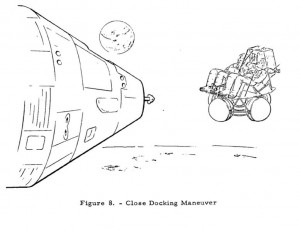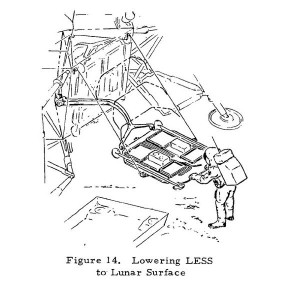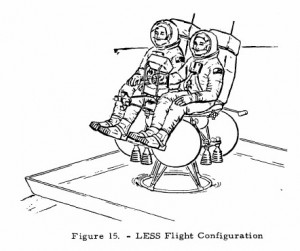Mar 23 2010
Apollo Lunar Escape System was All Guts
Let me take you back to an era before computer control of all aspects of spaceflight was considered necessary. It’s the early 70s, and although additional flights after Apollo 17 were eventually canceled, there were at the time plans afoot for longer duration stays on the lunar surface. However, a longer stay entailed an increased risk that the LEM ascent engine would not ignite when the time came to return to orbit.
What would the two surface-bound astronauts do? Would they wait for a rescue mission? No. They would unstow a wire-frame with small thrusters and collapsible fuel bladders from the LEM.
They would then transfer the ascent stage fuel to these bladders, and climb onto a perch on top, with life support supplied only by their space suits. They would then ignite their small rockets, and arc into the sky, guided to a rendevous with the command module only by an attitude indicator, a clock, and a list of desired pitches and times.
Once the pitch and time sequence was complete and they were in orbit, they would sit tight and pray they matched the checklist close enough that the CSM could find them before they ran out of oxygen.

It seems impossible that such a guts-only scenario would come up in the future. Imagine riding from the surface to an orbital rendezvous on essentially a jetpack, holding a joystick and a stopwatch.
I love this.
Apollo Lunar Escape System at Wikipedia
No responses yet

